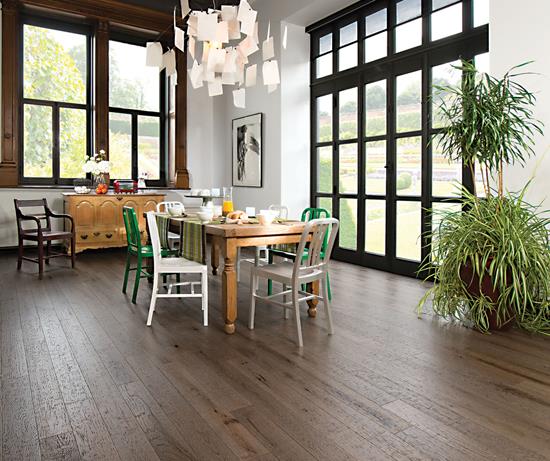Survey 2014: What the Retailers Think
By Darius Helm
Eight years ago, the fortunes of floorcovering retailers began to go south, and it has come back, in fits and starts, in the last few years. By 2013, it was finally safe to say that the residential market was strengthening, as last year’s survey illustrated. And this year, retailers report that the market is stronger still.
Those years were very tough on flooring retailers, with thousands closing their doors or bought up by stronger regional players. And those not big enough to be in the acquisition and consolidation business generally survived by diversification in one form or another. Surveyed retailers have reported increasing product diversification—beyond expanding flooring options, they’re also adding window treatments, countertops, cabinets and sometimes paint. Others have offered services like cleaning and maintenance. And most report that these efforts have helped shore up their businesses.
Others have diversified into other markets, and that’s meant targeting the multi-family market and the commercial market. Results have been more mixed for retailers taking this approach, and it’s also generated a good deal of confusion and inefficiency because of how different these businesses are. Much of the multi-family market, for instance, is a high volume, low margin business, which can be a frustrating environment for flooring retailers to find themselves in, having spent the last several years competing on price against home centers and big boxes.
Retailers that have decided to become commercial contractors have developed a reputation for leaving chaos in their wake, undercutting bids from seasoned contract dealers only to find out that they can’t get the job done for what they offered. Projects are poorly executed or delayed, clients go back to contract dealers to do the job right, and what’s already a contentious, finger-pointing enterprise gets that much uglier. Furthermore, the knowledge base for contract dealers is far more vast than that required for residential sales and installation teams—something that contract dealers have been trying to leverage for years—so having retailers coming in to compete without sufficient education threatens to set back the efforts of professional contract dealers to elevate their position in the flooring industry.
Fortunately, residential business is for now stronger than commercial business, so there’s a growing volume of work for those retailers that have been gumming up commercial business. Most of those retailers that have diversified their product offering generally seem satisfied with their strategies and will likely maintain their expanded ranges.
WHO THEY ARE
This year, flooring retailers from all across the U.S. responded to the survey, with the Midwest making up the biggest piece of the pie at 35%. Retailers from the South accounted for another 25%, along with 22% from the West and 18% from the East.
Floor Focus asked retailers about their annual revenues, and the results were encouraging. For several years after the housing crisis, growing numbers of retailers reported sales at the bottom end of the spectrum, below $600,000. It topped out at 26% of surveyed retailers in 2011, then fell to 19% in 2012, and 13% both in 2013 and this year. Also, 16% of retailers reported sales of $5 million or more, the same as last year.
In the last three years, survey responses suggest that retailers are increasingly paying their salespeople straight salaries—from 38% of retailers in 2012 to 41% in 2013 to 45% this year. Straight commission has gone from 21% to 16%, and 39% pay some combination of salary and commission. The trend is strongest in the Midwest, where 52% pay straight salary, and weakest in the West at 37%. Straight commissions are strongest in the West at 24% and weakest in the South at 12%—and in the South nearly half of surveyed retailers do a combination of salary and commission.
We also asked retailers about their installers, and this year 23% reported that their installers are company employees, compared to 17% last year. With installers, there were significant regional differences: only 7% of retailers in the South have in-house installers, compared to 38% of retailers from the East, 21% from the Midwest and 32% from the West. Previous surveys show the same disparity between the South (and often the Midwest), where independent contractors play a bigger role, and the East and West, where in-house installers are more common—though still a minority.
This year, just over half of the surveyed retailers report being part of a retail group. That’s about on par with results from the last several years, though down from last year’s 57%. Regionally, membership rates are highest in the East at 59%, with the Midwest at 54%, the West at 53% and the South at just 38%. These numbers move around from year to year, with the only constant being lower reported membership in the South.
Those affiliated with retail groups generally report high levels of satisfaction, and this year was no different, with 85% reporting being very or somewhat satisfied, compared to 88% last year and 90% in 2012. About 4% of retailers say they’re considering joining a group, and all of those retailers were from the South and Midwest.
For the complete Retailer Survey Results, see the July 2014 issue of Floor Focus Magazine.
Copyright 2014 Floor Focus
